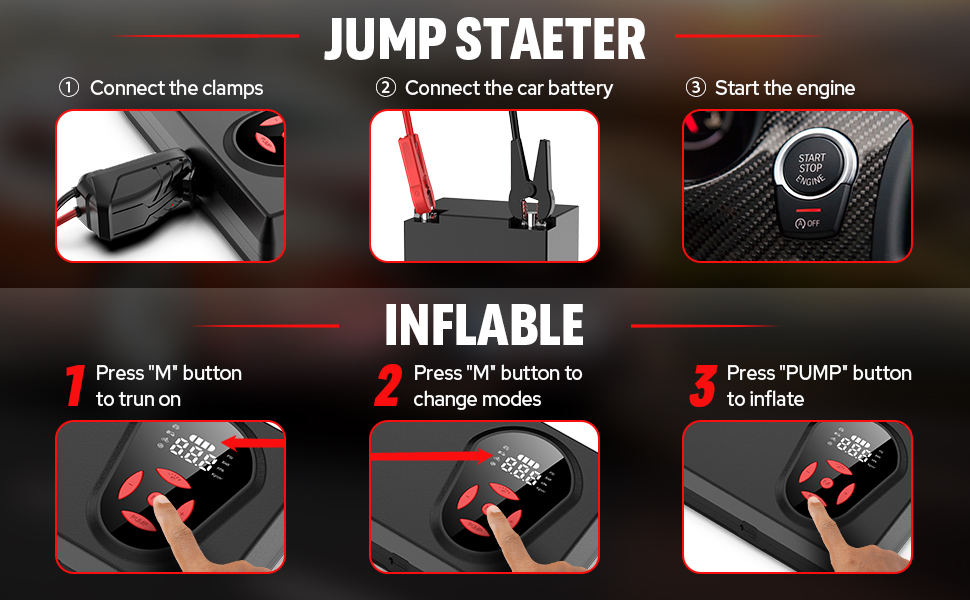A car booster jump starter power bank is a must-have tool for every vehicle owner. Whether you are going on a road trip, commuting to work, or simply running errands, having a reliable jump starter power bank can give you peace of mind in case your car battery dies. In this article, we will guide you on how to use a car booster jump starter power bank effectively and safely.

Step 1: Preparation
Before you use your car booster jump starter power bank, it is essential to ensure that it is fully charged. Locate the charging port on the jump starter and connect the appropriate charging cable. Plug the other end of the cable into a power source and let it charge until the indicator light shows that it is fully charged. Keep in mind that charging times may vary depending on the model and battery capacity of your jump starter power bank.
Step 2: Safety Precautions
While jump starting your car, it is crucial to prioritize safety. Make sure you are in a safe location away from traffic, and both the jump starter and your vehicle are turned off. Wear protective gloves and safety glasses to protect yourself from any potential accidents. It is also essential to read the manufacturer’s instructions and follow them carefully to avoid any mishaps.
Step 3: Connect the Jump Starter
Locate the positive and negative terminals on your car battery. The positive terminal is usually marked with a “+” symbol, and the negative terminal is marked with a “-” symbol. Take the jumper cables that came with your jump starter power bank and attach the red cable clamp to the positive terminal of your car battery. Connect the black cable clamp to the negative terminal.
Step 4: Turn on the Jump Starter
Once the jumper cables are securely connected, turn on your car booster jump starter power bank. Verify that the power bank is showing sufficient power to jump-start your vehicle. Some models may also have additional features, such as a built-in flashlight or USB ports for charging other devices.

Step 5: Start Your Vehicle
With the jump starter powered on, proceed to start your vehicle. Turn the ignition key or press the start button, and your car should start up effortlessly. If your car doesn’t start immediately, do not crank the engine for more than a few seconds continuously. Give it a short break before attempting again to avoid overheating the jump starter or damaging your vehicle’s electrical system.
Step 6: Disconnect the Jump Starter
Once your vehicle has started, it’s time to disconnect the jump starter cables. Begin by removing the black cable clamp from the negative terminal of your car battery. Then, disconnect the red cable clamp from the positive terminal. Be cautious and ensure that the cables do not touch each other or any metal surfaces during this process, as it can result in a dangerous electrical discharge.
Step 7: Recharge the Jump Starter Power Bank
After successfully jump-starting your vehicle, it is crucial to recharge your car booster jump starter power bank. Store it in a safe place and connect the charger as described in Step 1. Keeping your jump starter power bank fully charged ensures its readiness for future emergencies.

Conclusion
By following these simple steps, you can effectively and safely use a car booster jump starter power bank to revive a dead car battery. Remember to take necessary safety precautions, read the manufacturer’s instructions, and keep your jump starter power bank charged to ensure its optimal performance when you need it the most. Invest in a reliable jump starter power bank today and never worry about being stranded with a dead battery again!



